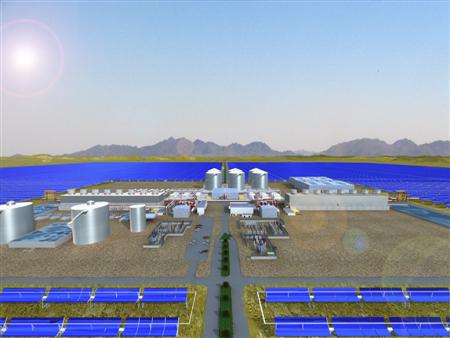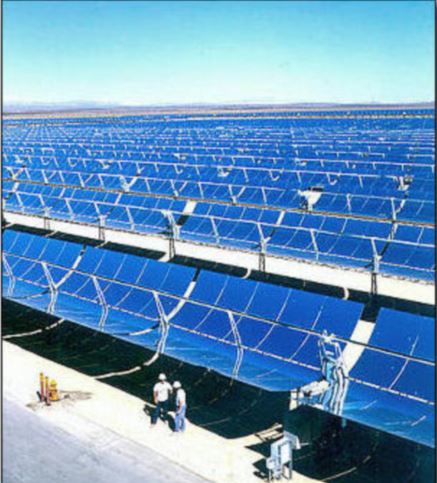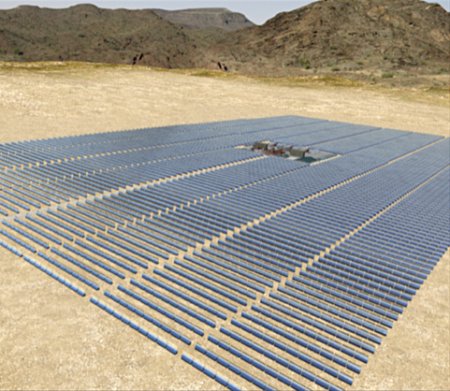A solar power plant in Gila Bend, AZ, is taking solar energy to a different level, using molten salt as a means of keeping electricity running for six hours after the sun goes down.

Artist's illustration of the full Solana plant. (Image via Abengoa)
Solana, the 280-megawatt power plant, run by solar energy company Abengoa Solar, proves that solar energy can be stored and dispatched on demand.
How it works
Solana employs 2,700 parabolic-shaped mirrors attached to structures that track the sun and focus on the sun’s heat. (Traditional solar power plants use four-sided flat mirrors called heliostats.) Later, water is transformed into steam and powers a conventional steam turbine.

Parabola-shaped mirrors are used in this plant.
In addition to creating the steam, the heat transfer fluid is used to heat molten salt in tanks neighboring the steam boilers. The storage system used contains six pairs of hot and cold tanks that can hold 125,000 metric tons of salt which is stored at a minimum temperature of 530ºF.
Molten salts can operate at higher temperatures than synthetic oils in traditional solar plants which make them ideal for this type of power generation.
When the sun goes down, the transfer fluid can be heated by the molten salt to create steam by running it through the tanks instead of the field of parabolic mirrors.
Why is this better?
In traditional, or concentrated, solar power plants, turbines stop turning at night, but a plant that uses a thermal energy storage system allows for electricity production even at night since it uses up the sun’s energy during the day, which in turn heats up the salt, and then runs on the salt during the nighttime hours.

Illustration of field of parabolic mirrors at Solana.
Abengoa predicts that the six hours of sustainable energy will be able to satisfy Arizona’s electricity demands during the summer’s peak evening and nighttime hours.
According to the company, the plant will generate enough clean energy to power 70,000 houses and will prevent 500,000 tons of carbon dioxide from entering the atmosphere each year.
Story via Abengoa Solar.
Advertisement
Learn more about Electronic Products Magazine





